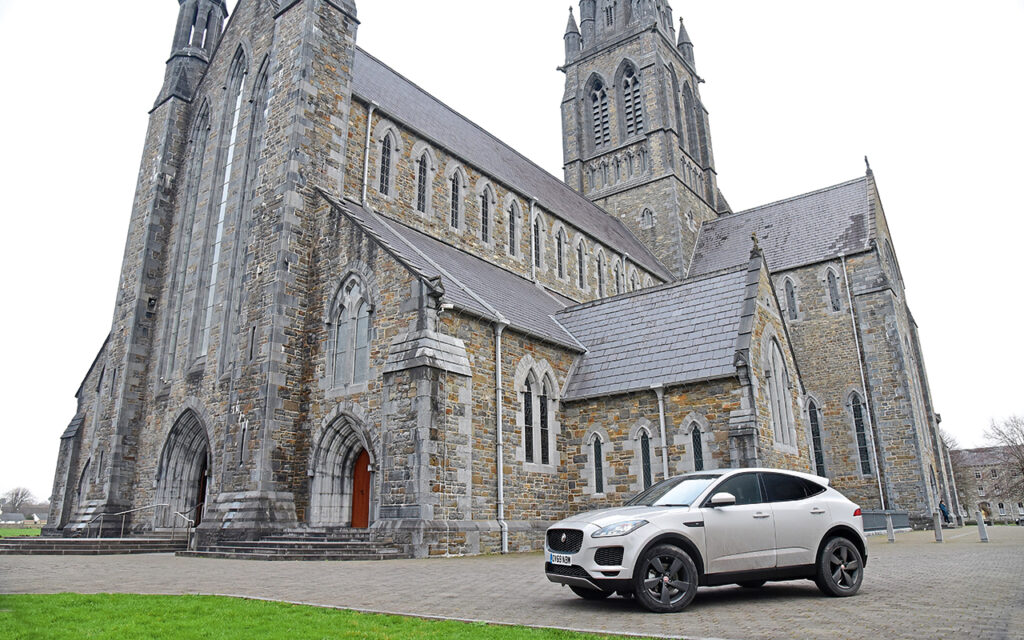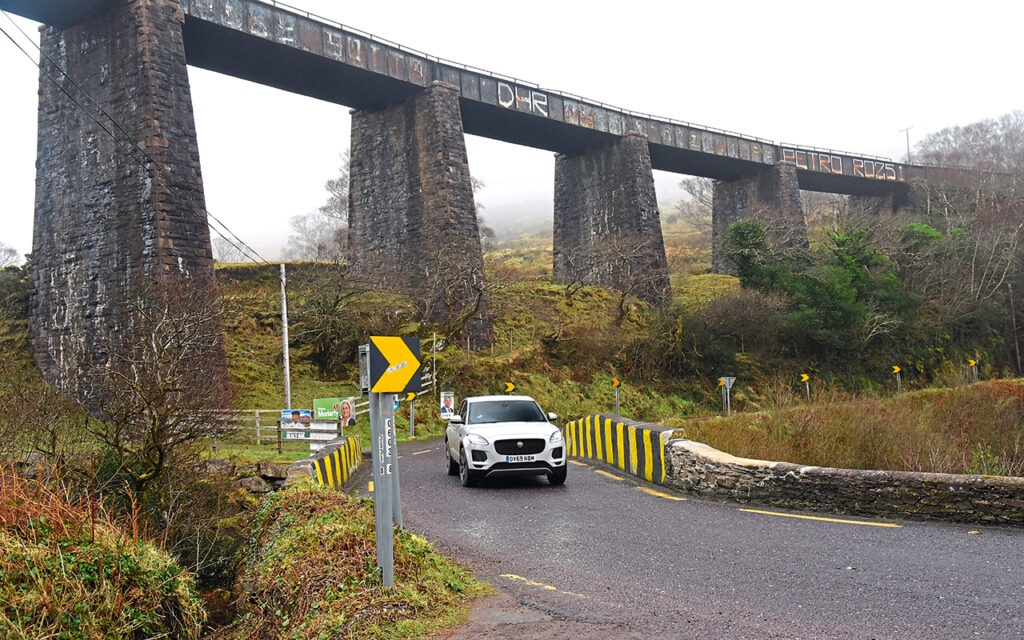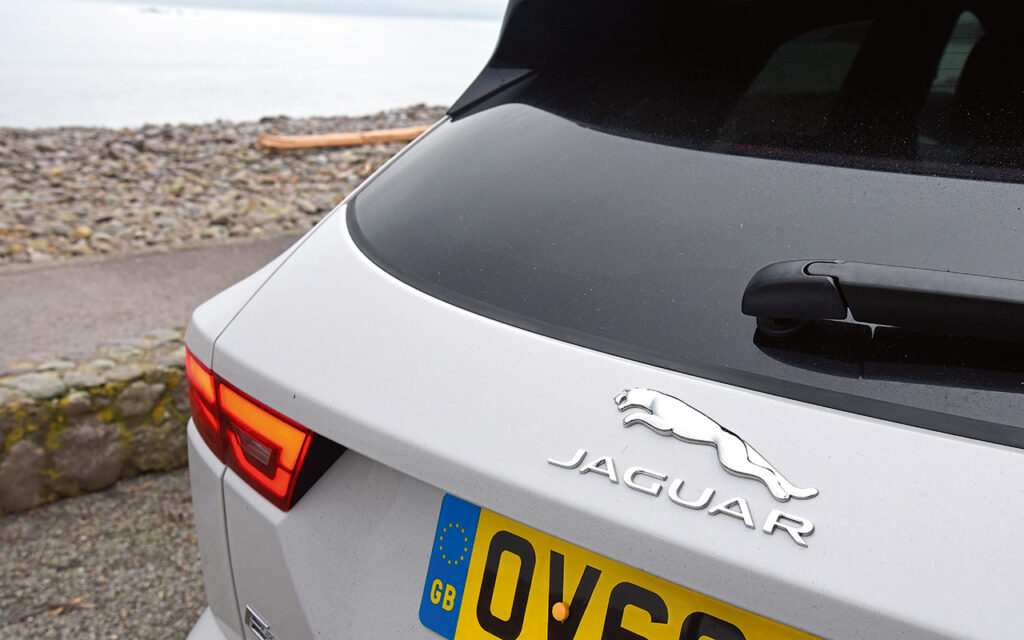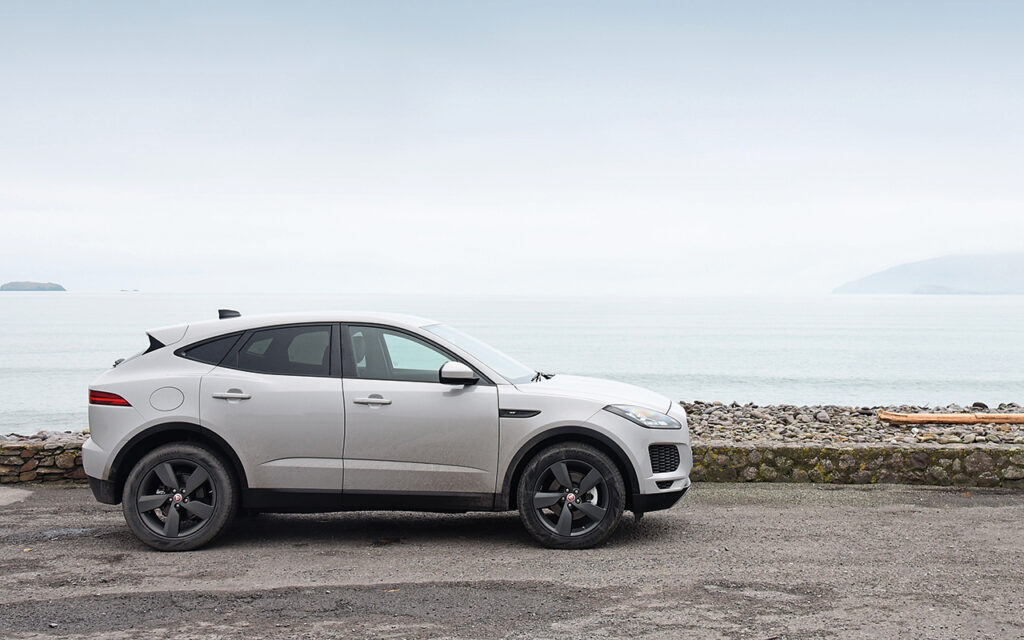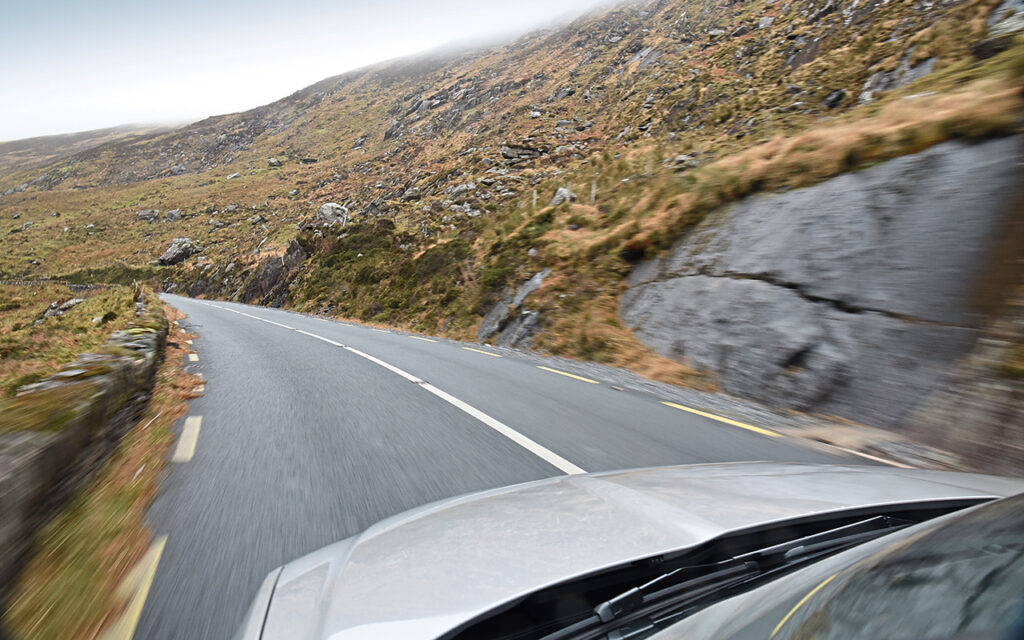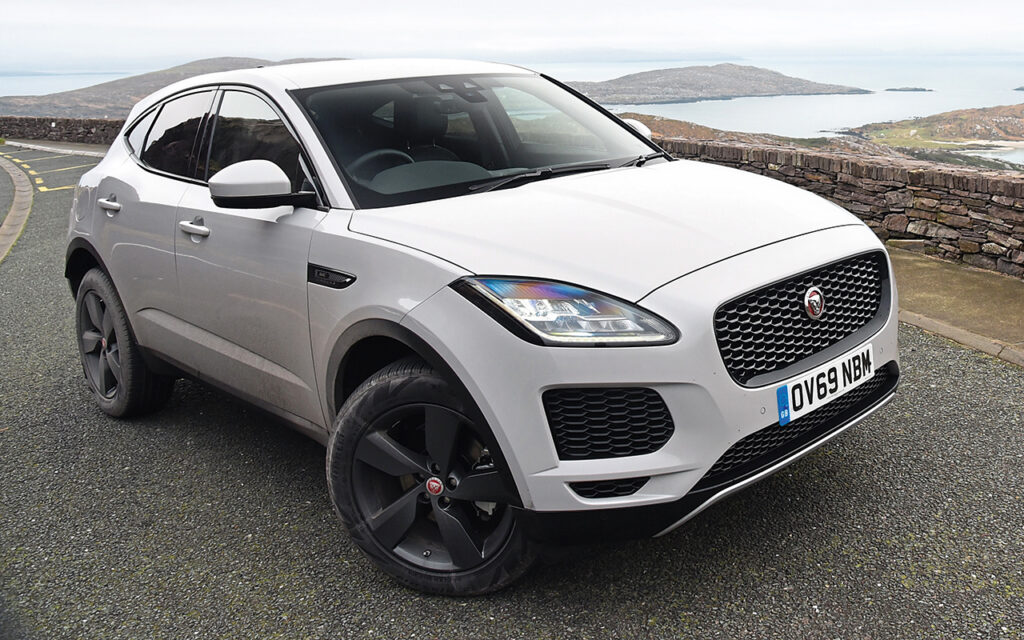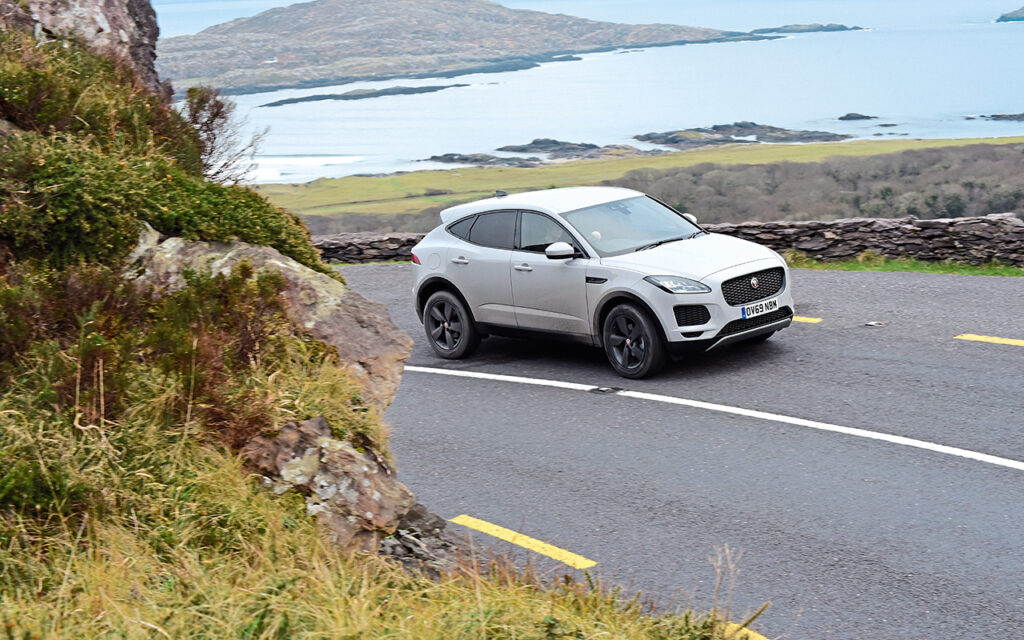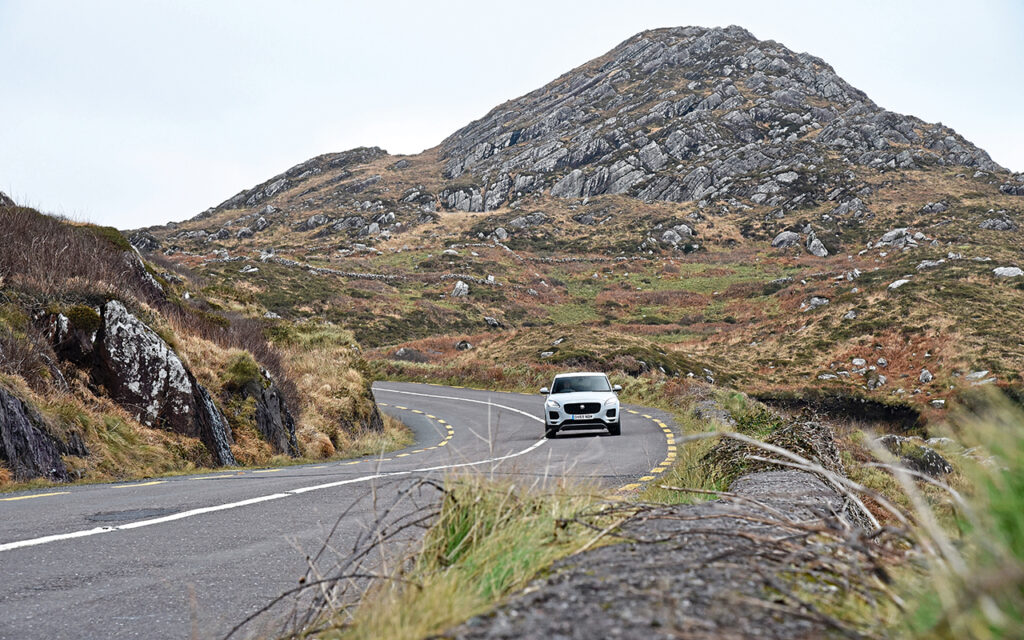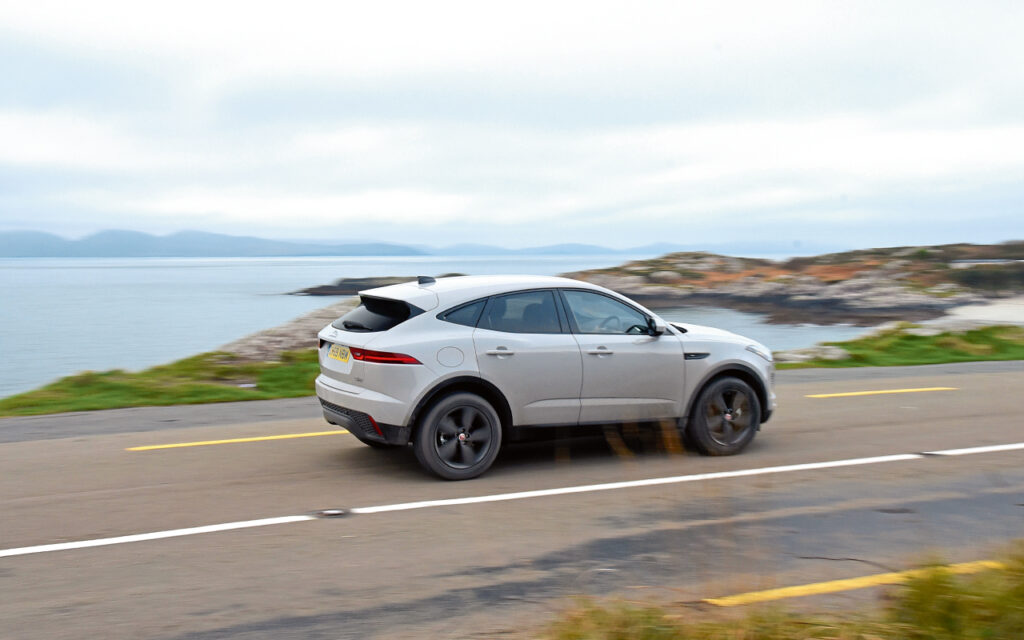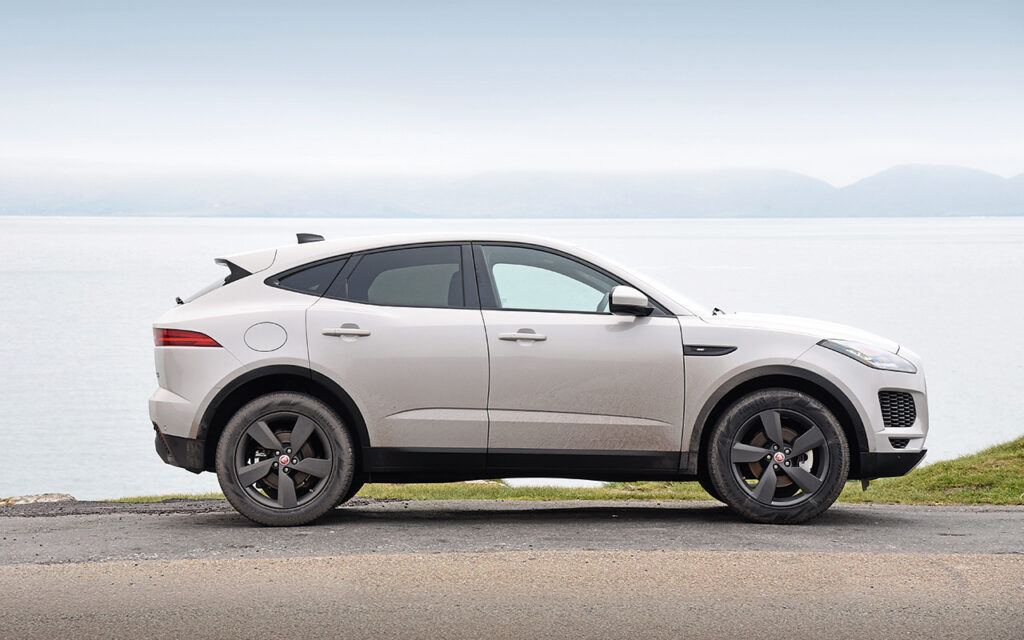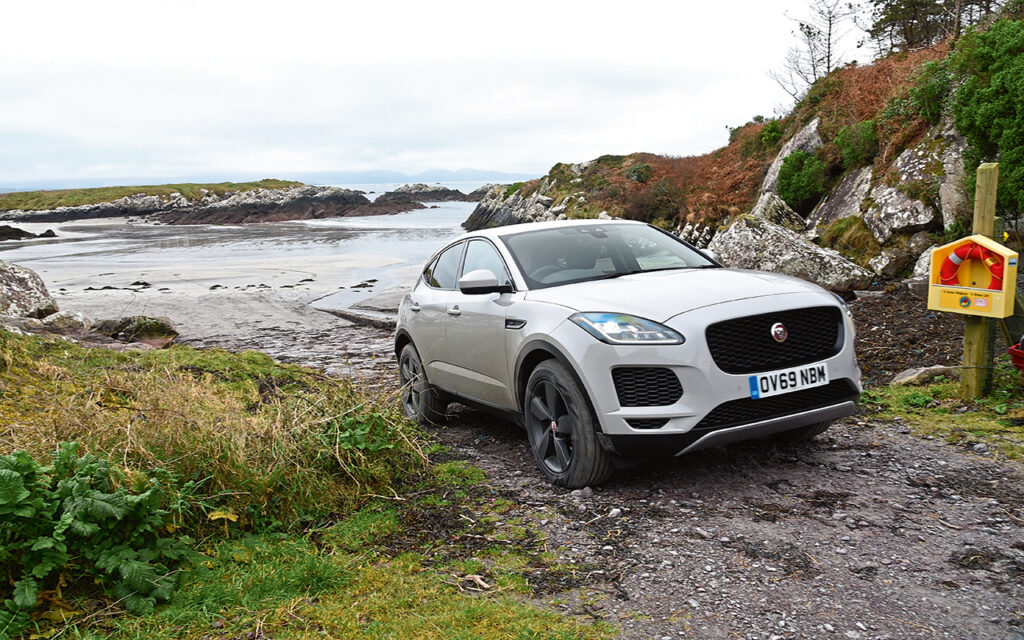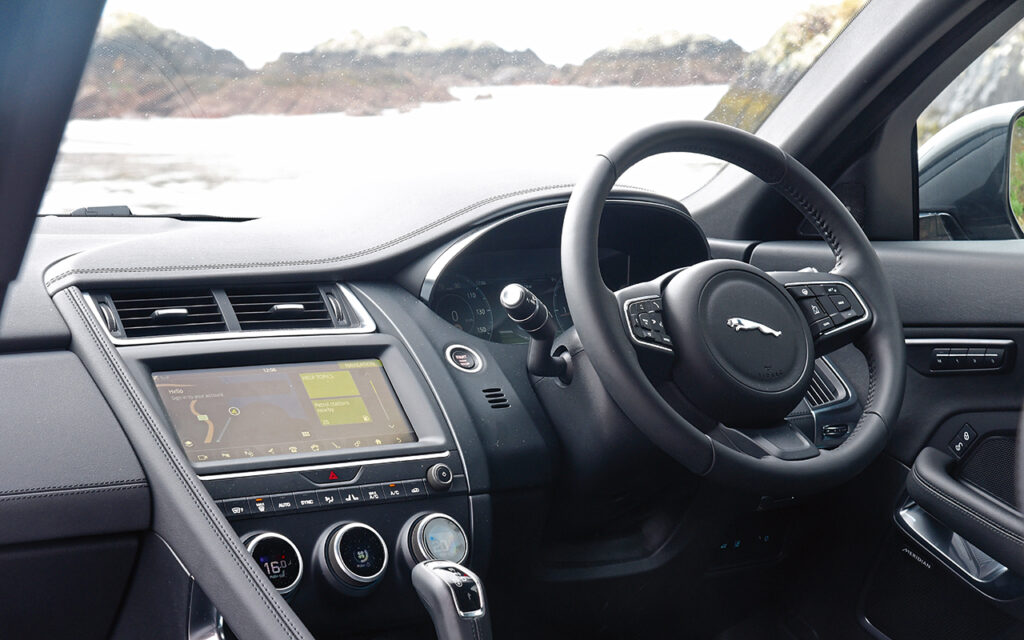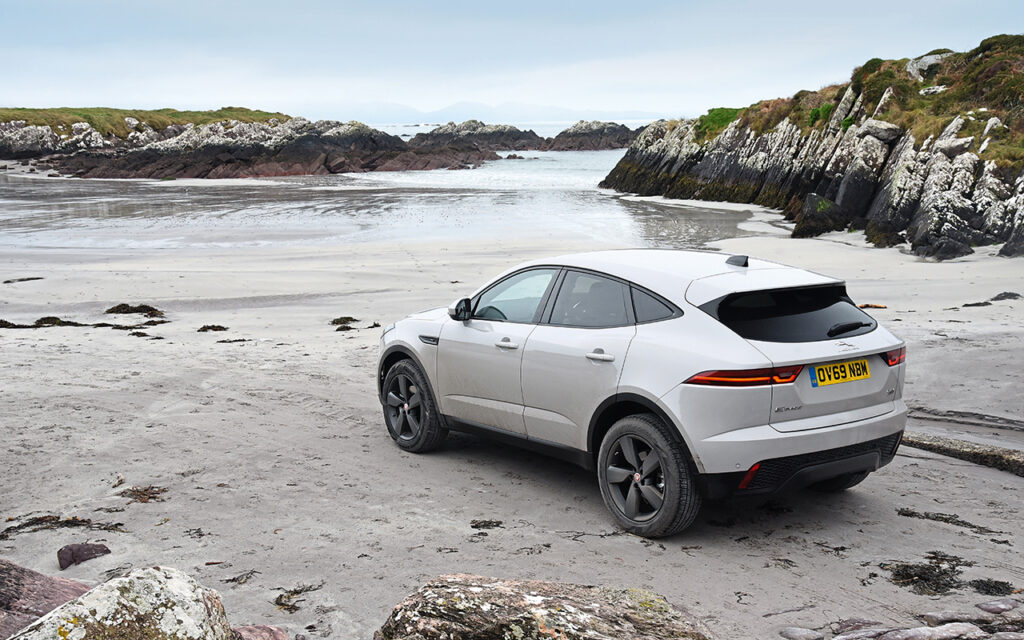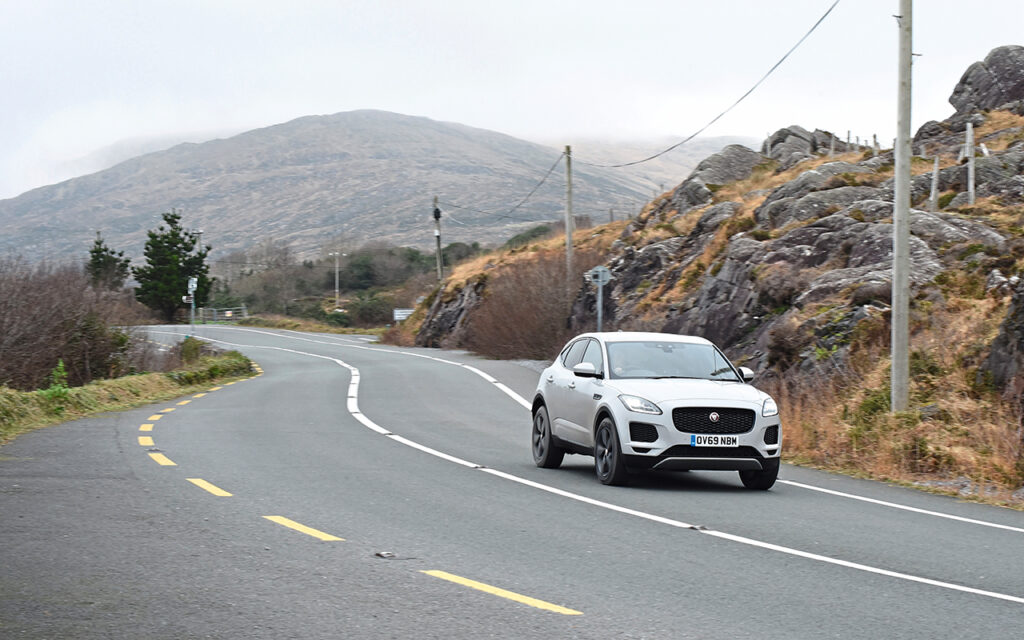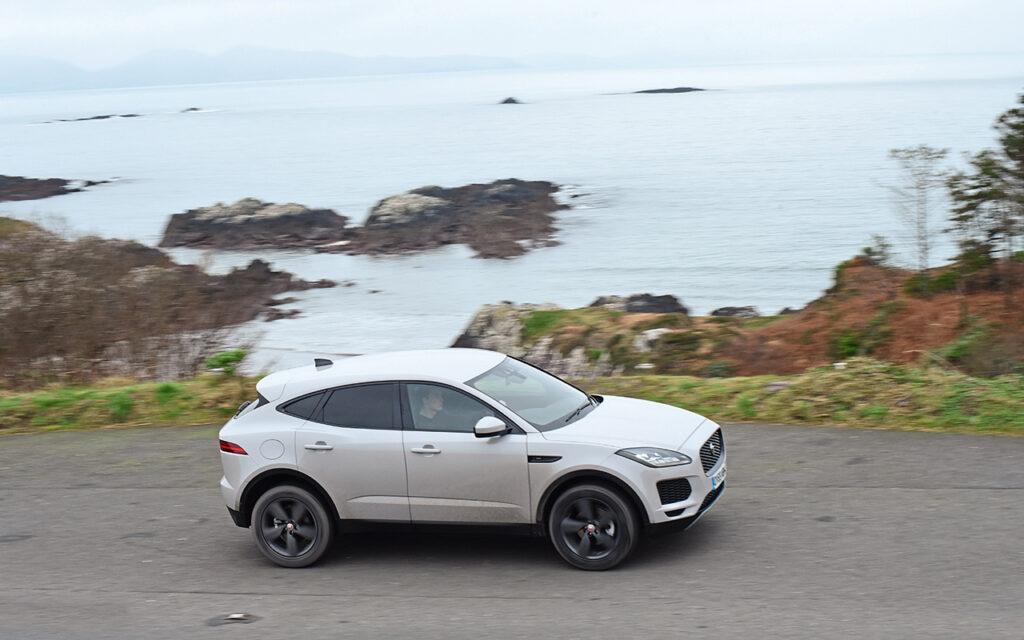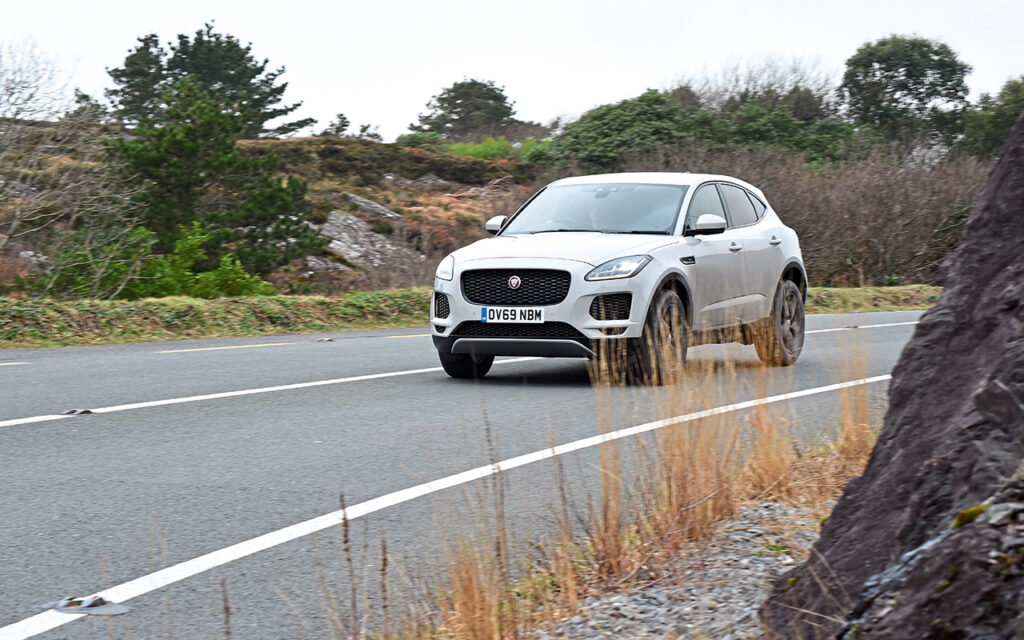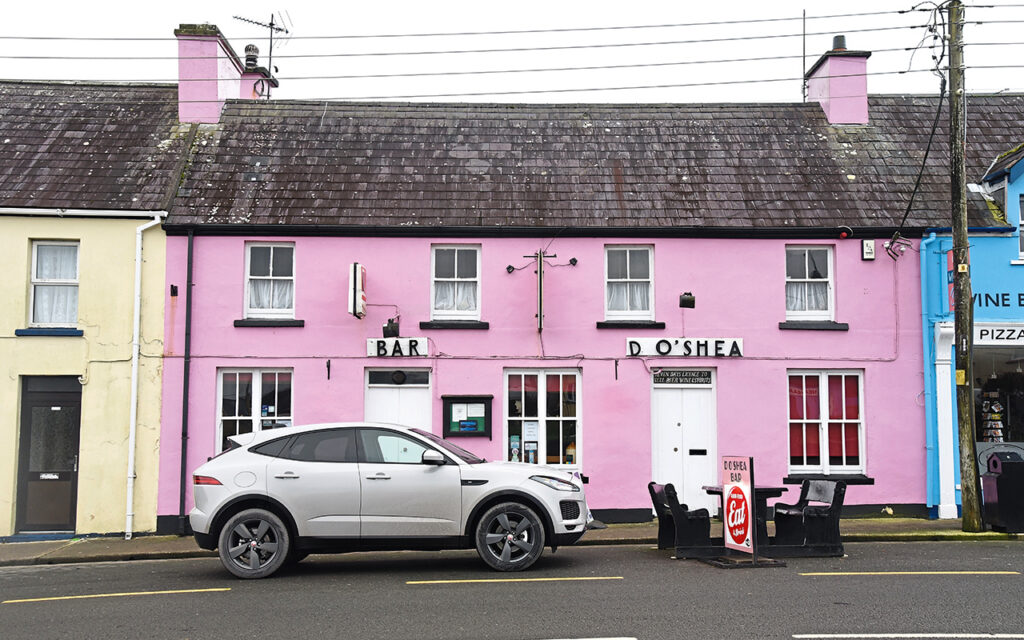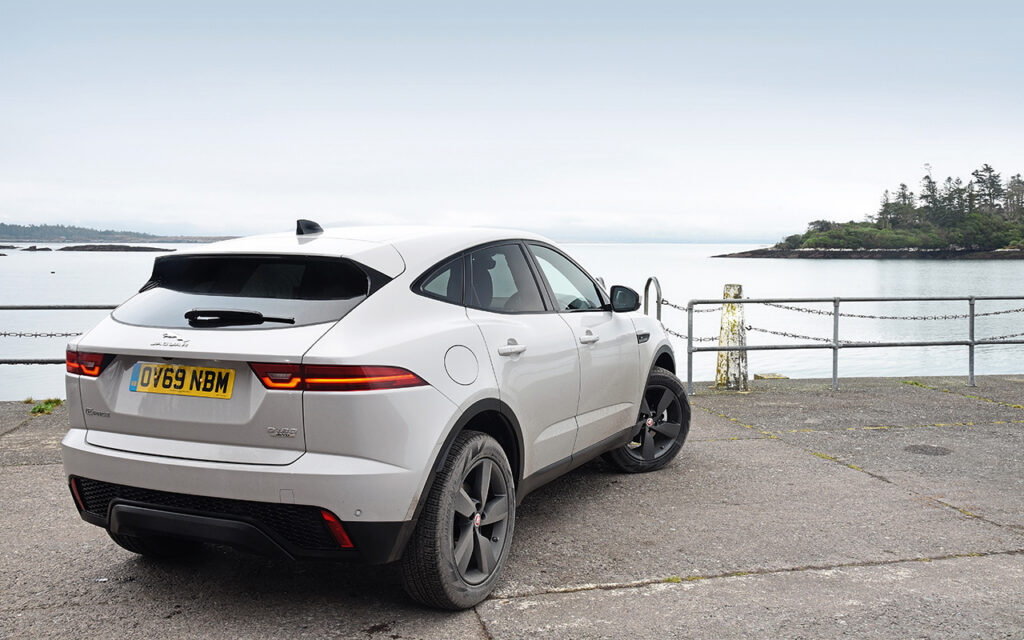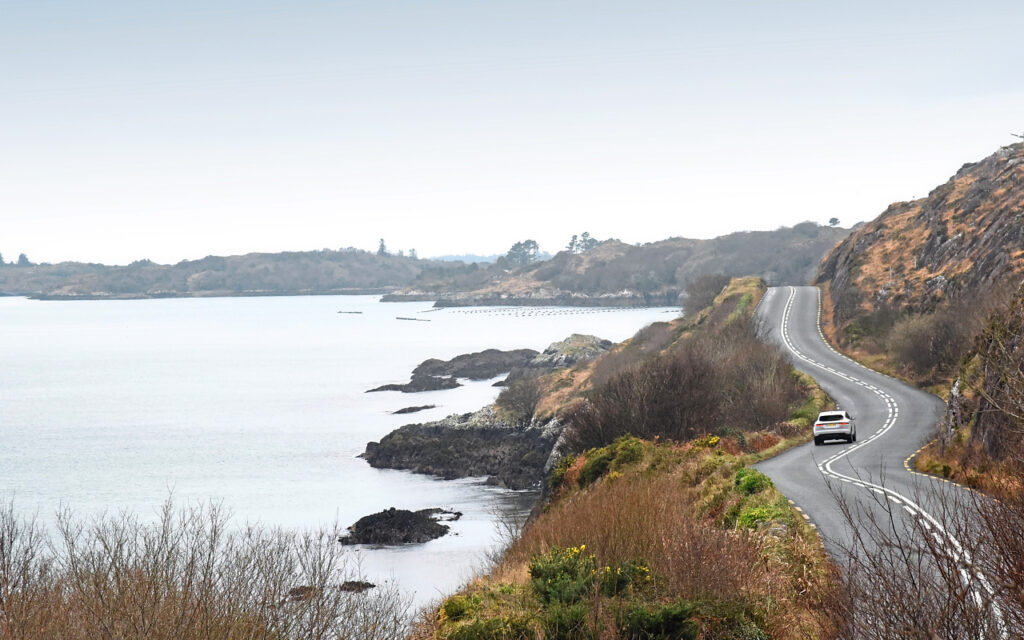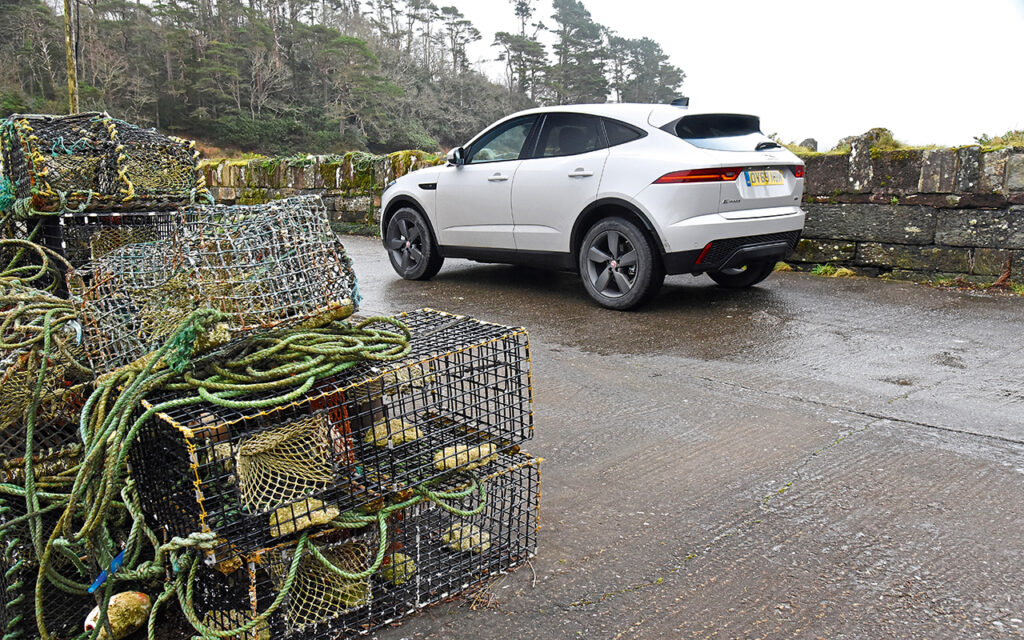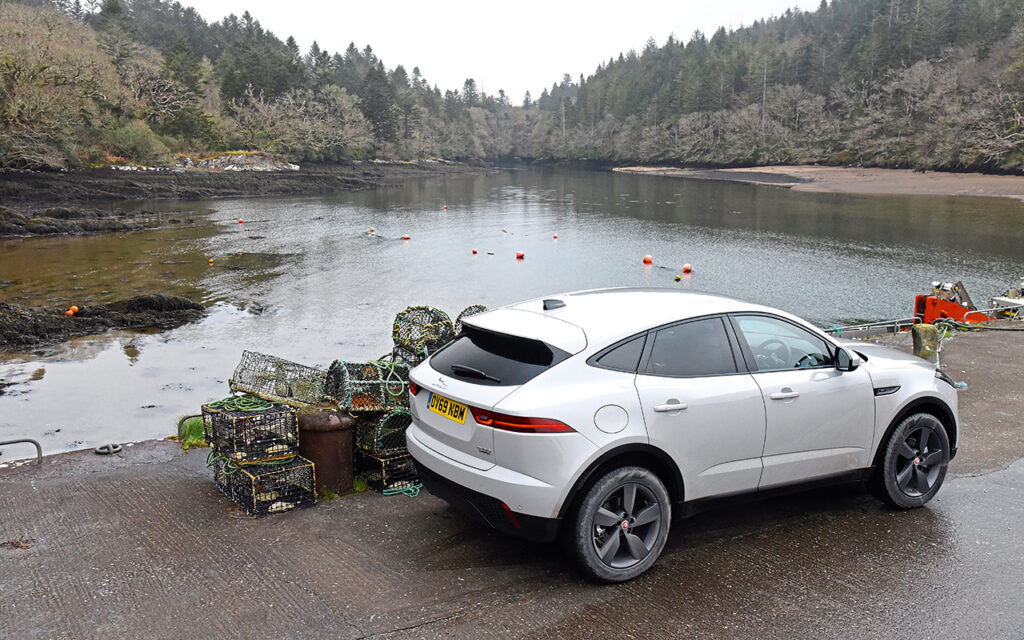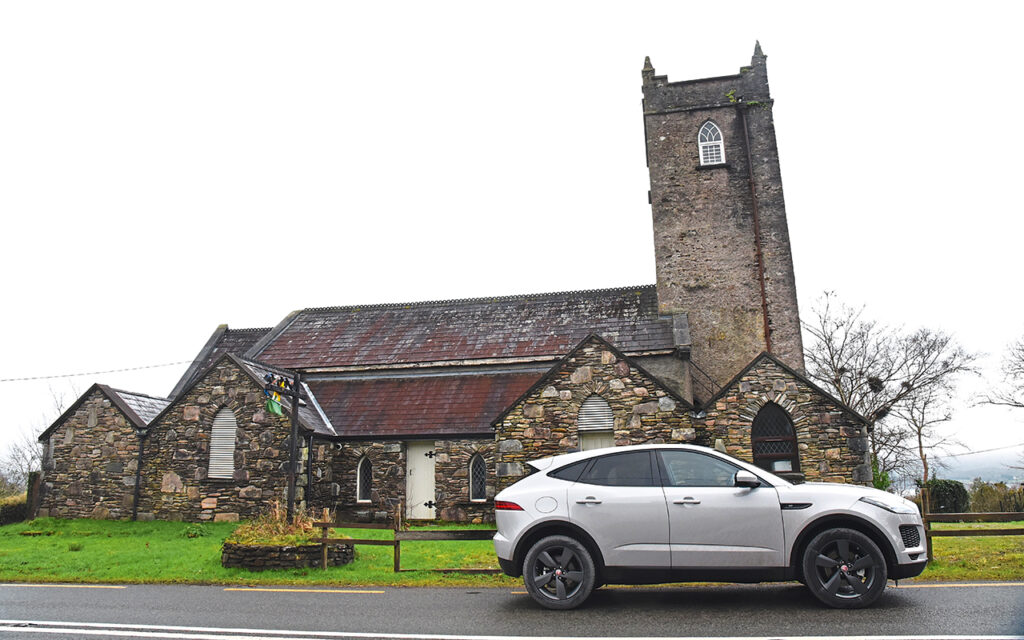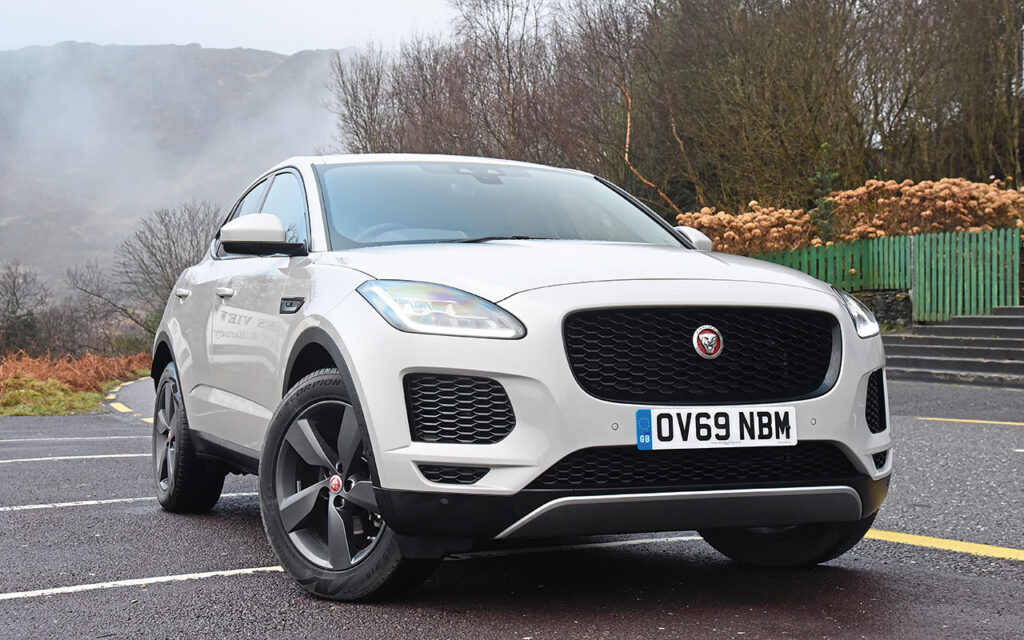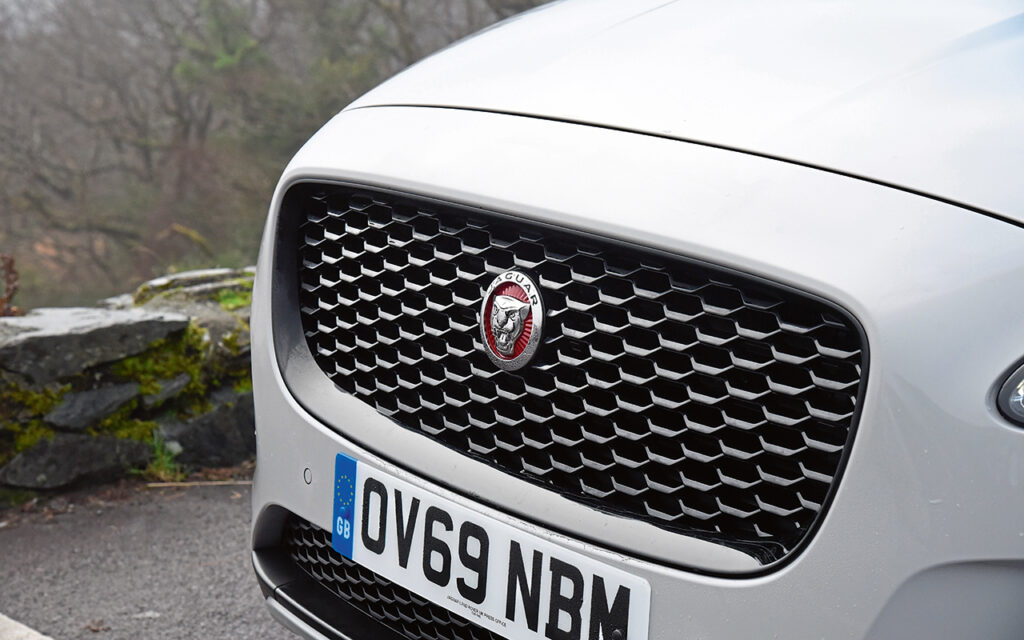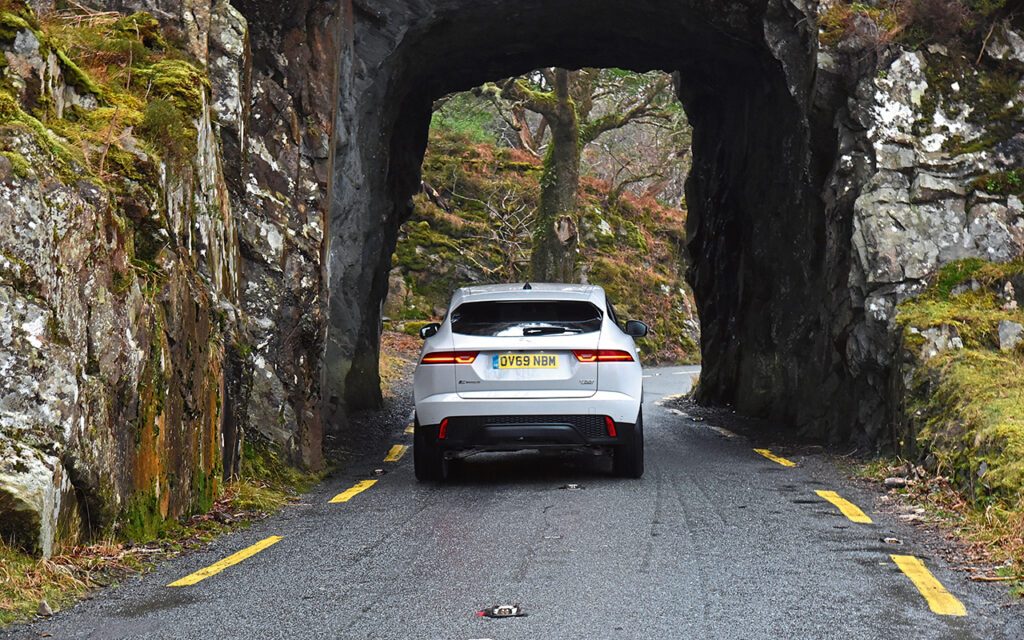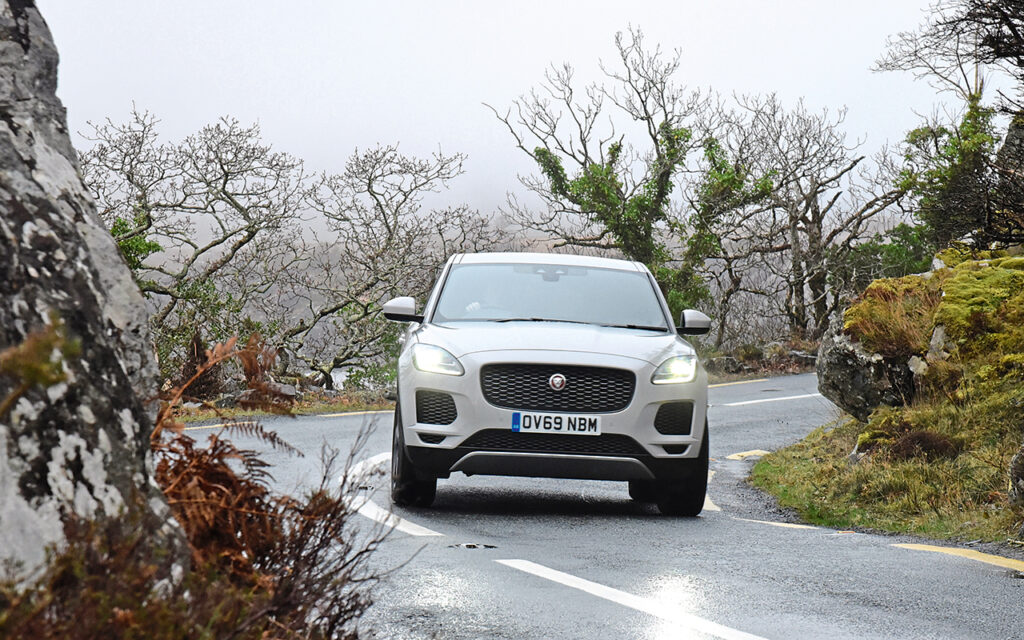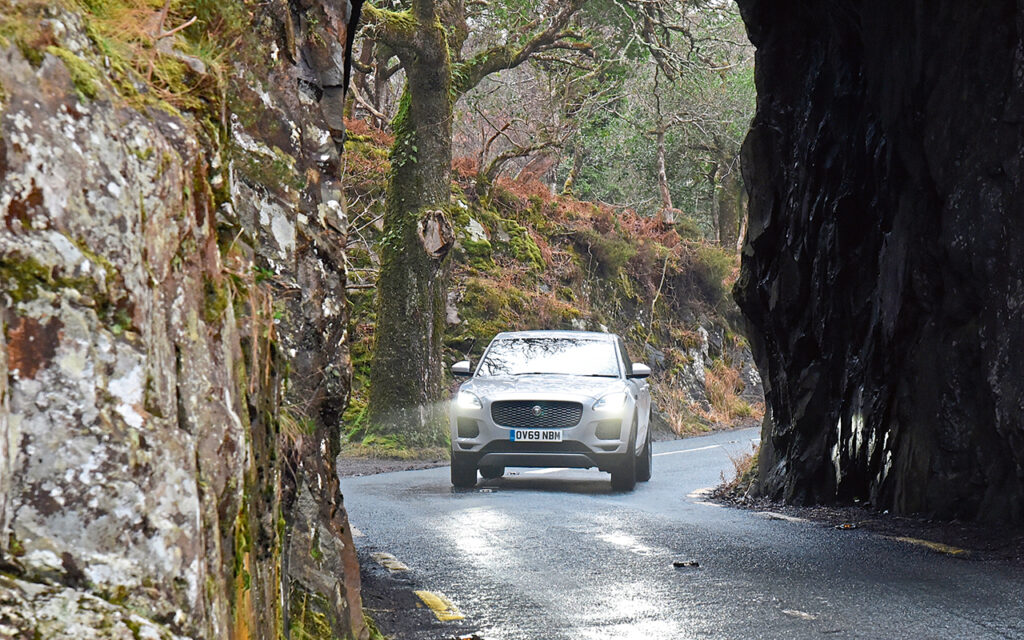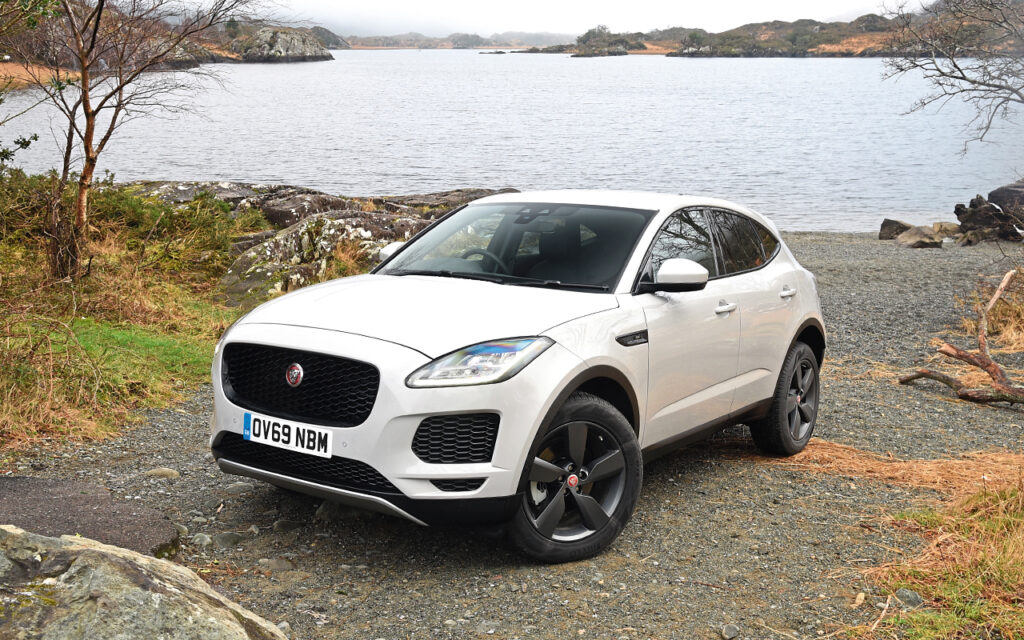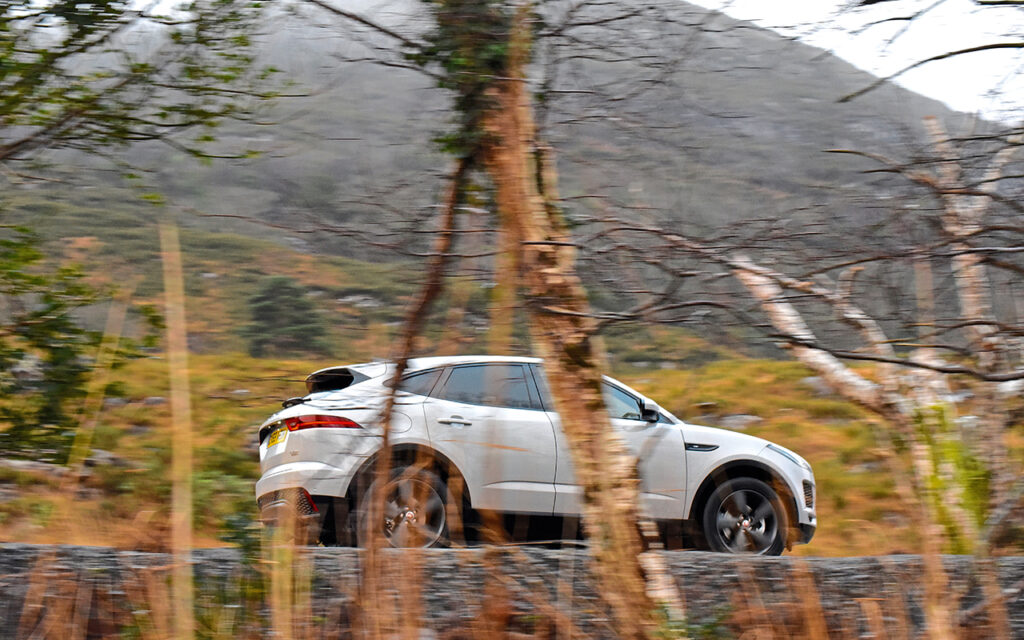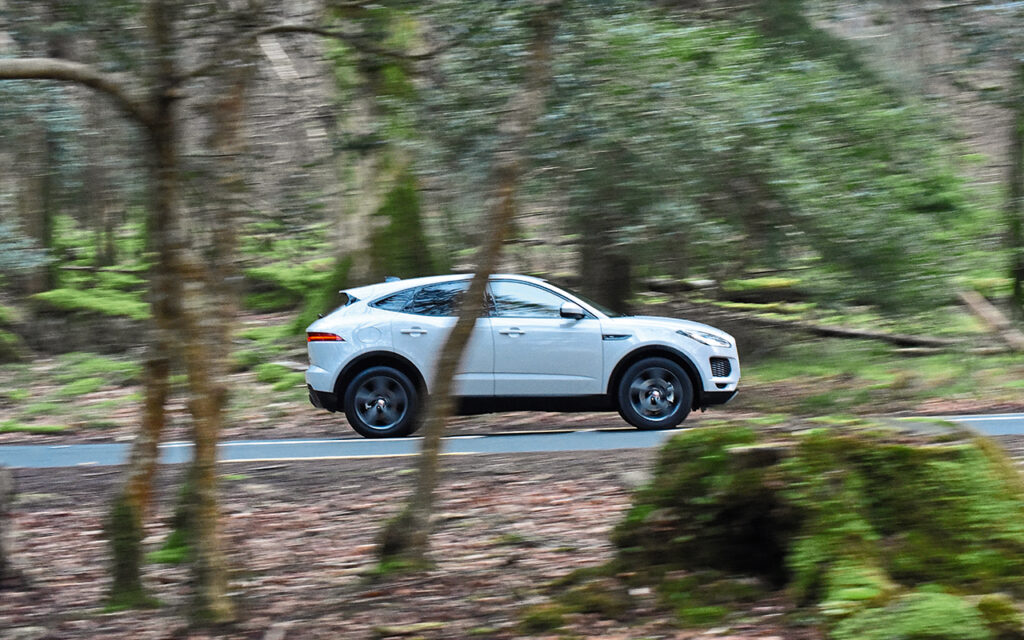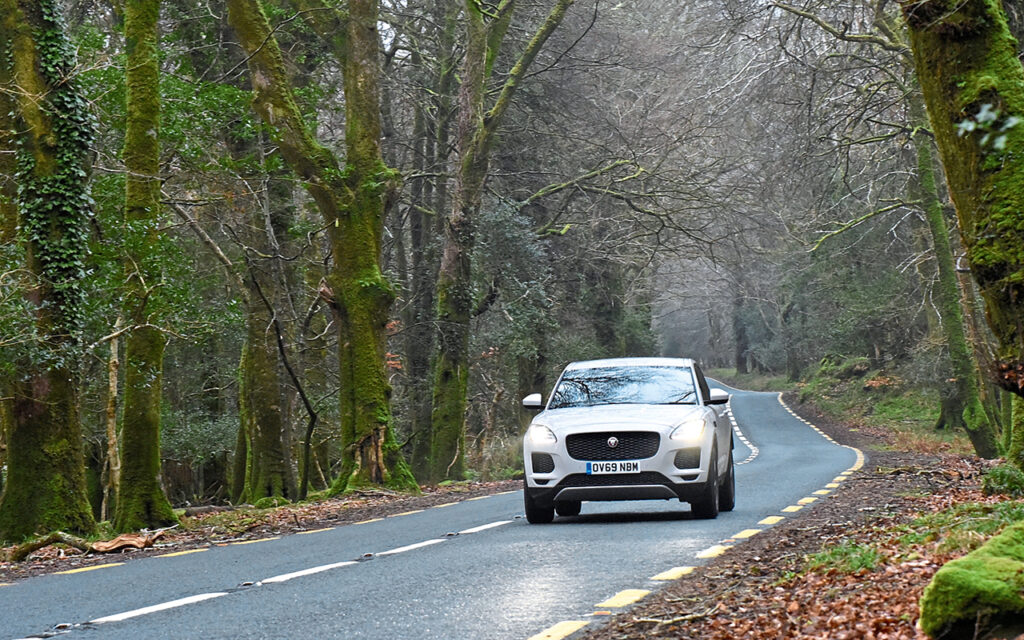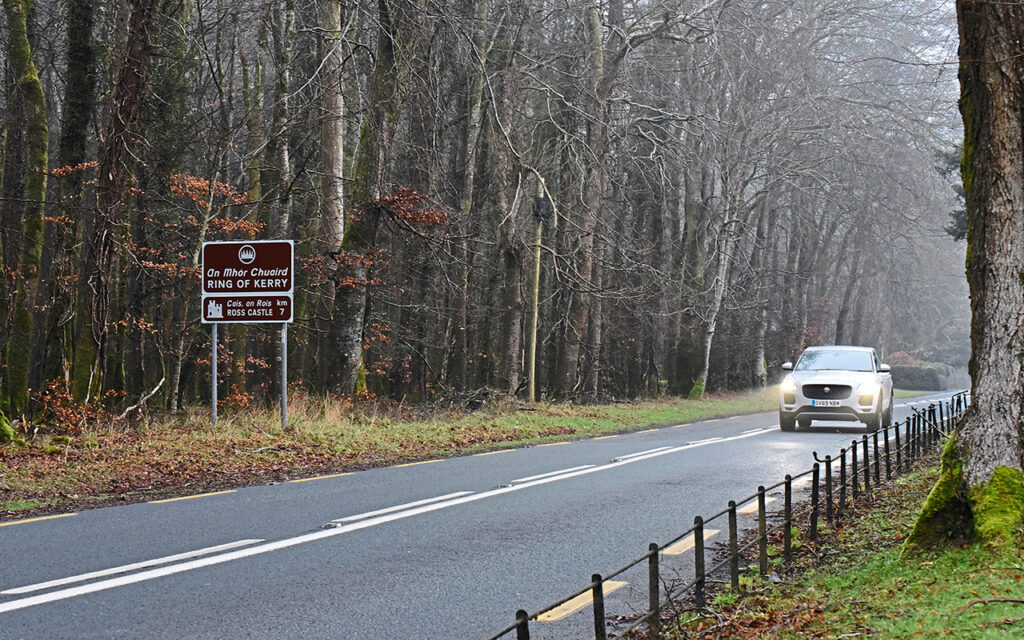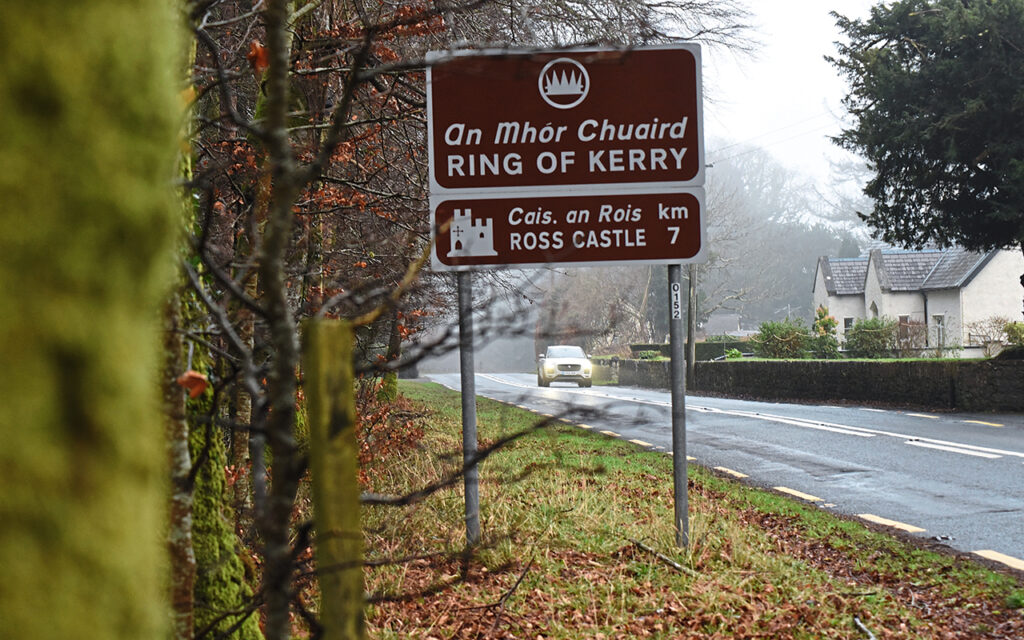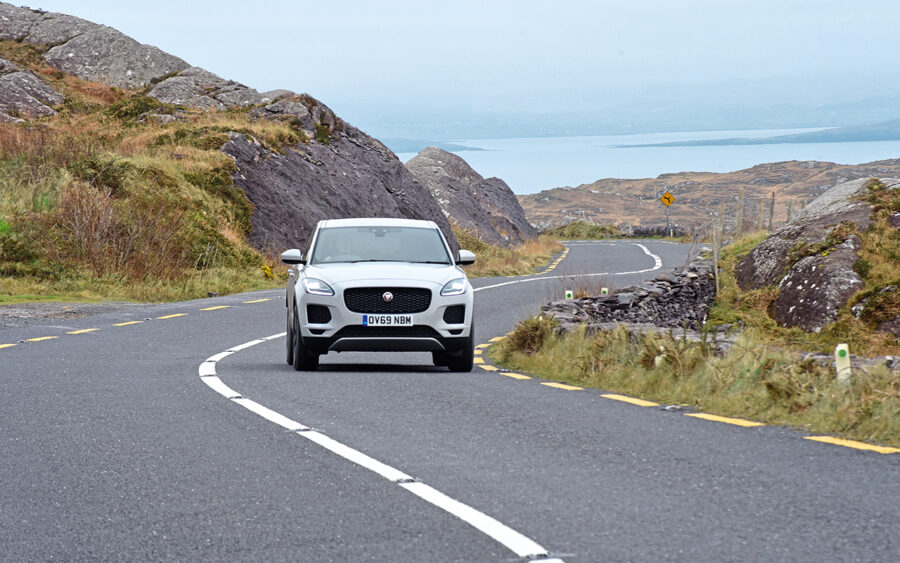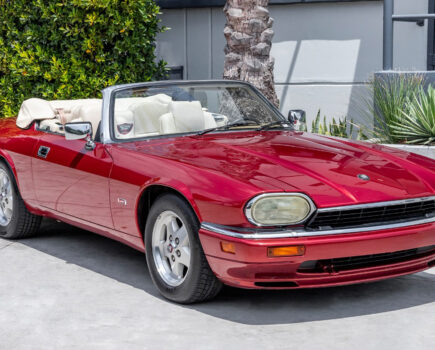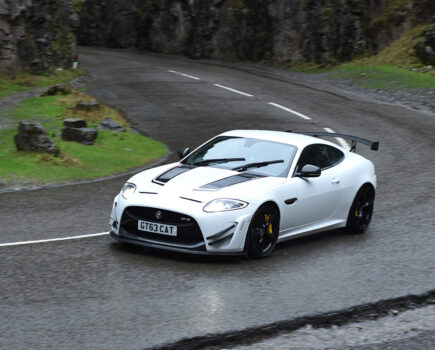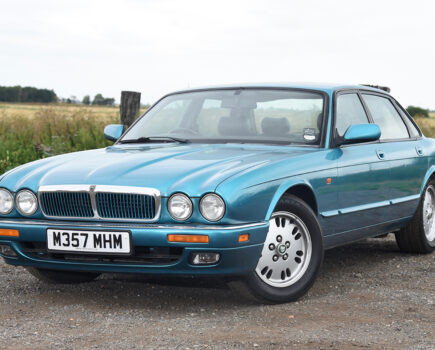We tackle the Ring of Kerry in a Jaguar E-Pace to see how the brand’s smallest SUV measures up
Words: Paul Walton
Not every adventure needs to be a 1,000-mile journey to new and undiscovered locations through harsh, bleak and inaccessible conditions. They can be a gentle, short drive through stunning countryside. Take the Ring of Kerry: a 110-mile circular route around the Iveragh Peninsula in County Kerry, on Ireland’s west coast, with ever-changing landscapes, beautiful scenery and occasionally challenging roads, it has all the ingredients for an exciting, if shorter, adventure.
And not every car used for an adventure needs to be a huge, rugged and unrefined SUV; they can be small, compact and subtle. In other words, the kind of car Jaguar currently produces. So, is the E-Pace the perfect car for an adventure such as the Ring of Kerry?
My starting point is Killarney in south-west Ireland that will be forever immortalised by such hits as There’s Only the One Killarney, How Can You Buy Killarney? and my own personal favourite, the foot-stomping My Little Cottage Home in Sweet Killarney. With the exception of Dublin, there are more hotel beds in Killarney than in any other Irish town or city, its popularity no doubt partly due to the 110-mile loop I’m about to navigate. Other than the thick fog obscuring what looks to be a pretty town, I’m glad I’ve come in January since it must be rammed in the summer.
My transport for this mini adventure is a gorgeous E-Pace SE 2.0d in Borasco Grey (a £640 option). Although several wags have suggested the car appears as though it still needs the top coat of paint, I reckon the light hue highlights the car’s attractive, chunky and modern lines, complemented perfectly by the dark satin finish of the 19in, five-spoke alloys (a further £310).
I start by heading south out of town on the N71. Since tourist buses are supposed to drive anti-clockwise to avoid blockages at some of the narrower sections, I’m going in the opposite direction. If I wanted to get stuck behind a smoky old bus, I’d have driven around London.
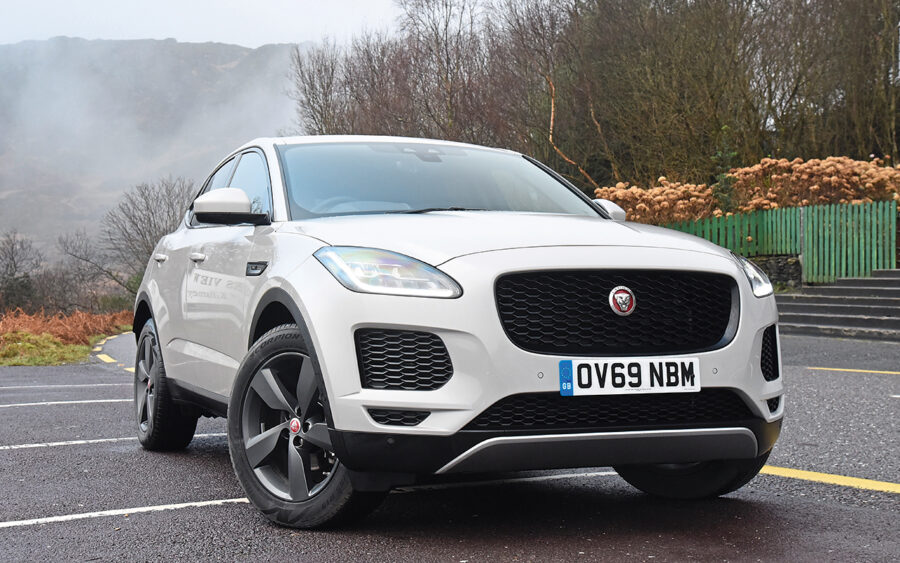
At the tiny village of Cloghereen, I enter the thick forest of the Killarney National Park. Created in 1932 when Senator Arthur Vincent and his family entrusted Muckross House & Estate into the care of the Irish State, it is Ireland’s oldest national park. Spreading out over 26,000 acres, its scenery is in contrast to the later coastal views from the Ring of Kerry, including the unfortunately named Muckross Lake. It doesn’t look dirty but I still don’t want to go swimming.
With the edge of Mangerton Mountain on one side of the road and the south shore of the larger Upper Lake on the other, I’m pleased with my choice of car. Although on a map you’d think an F-Type would be better suited to the road’s tight twists and turns, the reality is very different. Extremely narrow in places (such as where a tight hole has been blown out of the actual rock face) and with a loose surface, it’s not an ideal recipe for a wide, low and powerful sports car.
The E-Pace, by comparison, scampers around the bends with the same agility as the many mountain goats that run wild in the area. With 180PS (176bhp) and 317lb of torque, the engine has enough grunt to accelerate smoothly out of any corner while its Active Driveline all-wheel-drive system (which intelligently controls torque distribution between the front and rear axles) ensures there’s always plenty of grip, no matter the surface.
The issue the car has on these roads is the nine-speed automatic gearbox – not the unit itself, which is sourced from ZF and works just fine. The problem lies in having too many gears for 176bhp. On twisty sections like this, the ‘box is forever changing up and down, hunting for the correct gear. If it were a six-speeder, for example, the ‘box would hold the gear until it was the correct time to change.
So, it’s easier for me to simply knock the gear selector (the same as used in the F-Type) across to the left, putting the car into Sport mode. Now, I can change gear manually by pushing the lever up or down. The manual changes are fast and accurate, but hold the revs without changing up, ready for me to blast out of a corner.
After the road climbs 500ft, it reaches Ladies’ View, one of Ireland’s most photographed vistas – the lakes I’ve just passed. The Irish Times ranks it as one of the most photographed places in Ireland, while the Daily Edge considers the view to be among Ireland’s finest on Instagram. The name, which stems from a time before social media, relates to the admiration that Queen Victoria’s ladies-in-waiting had for the view during the 1861 royal visit to the country. I’d like to agree with them, but because the mist is so thick I could slice it, I can barely see the car, let alone the sights. While I might like the car’s colour, Borasco Grey is apparently the exact same shade as the fog.
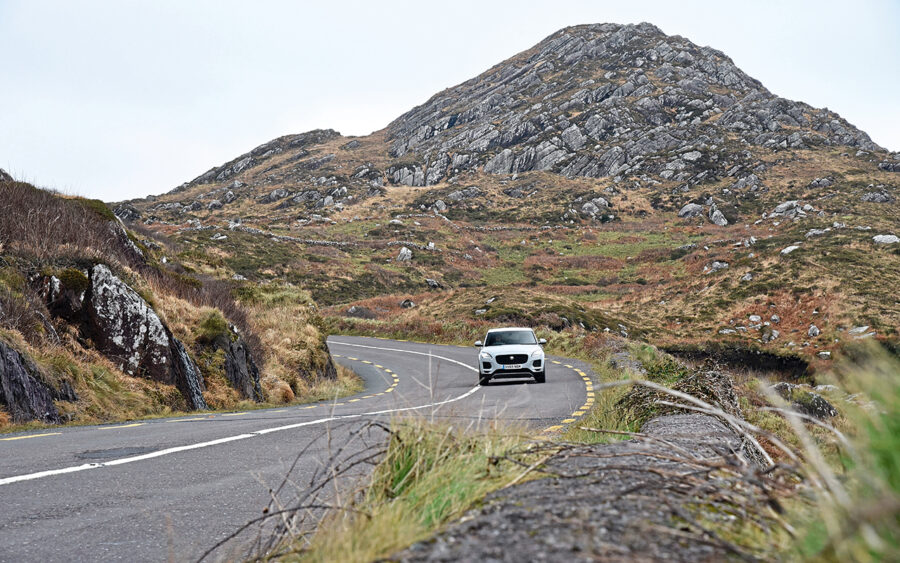
Thankfully, as our elevation lowers, the mist starts to clear, so that by the time I reach the tiny village of Kenmare – known for its stone circle (think a smaller, less-impressive Stonehenge) – and take a right onto the N70, it’s gone.
The route now follows Kenmare Bay and offers some tremendous views of the typically Irish, craggy coastline. The road is also straighter, smoother and faster here, so I put my foot down, the 2.0-litre unit in the E-Pace responding instantly. It’s a pity there has been such an anti-diesel backlash at the moment, because JLR’s 1,999cc turbocharged Ingenium unit is a fine engine, the smoothness of its power delivery matched by its refinement. It’s economical too, returning on average 40mpg.
I pass through the unusually named village of Sneem, the word coming from An Snaidhm, meaning The Knot. It is said that a knot-like swirling takes place where the River Sneem meets the currents of Kenmare Bay in the estuary just below the village. Another explanation is that Sneem village comprises of two squares, north and south, and a bridge in the middle viewed from overhead acts as a knot between the two squares. Like every village along the Ring of Kerry (and Ireland, for that matter), with many of the shops and bars brightly painted to attract tourists, and a lack of familiar, big chain stores, it is a pretty, vibrant place.
The N70 continues along several miles of desolate moorland that remind me of my native Yorkshire, before picking up the coast again at Whitesand, where a sharp left just outside the village takes me onto the picture-postcard Killeen Beach. Feeling adventurous, I park on the white sand and marvel at the views, the cleanliness of the beach and how spookily quiet it is. I can’t see another soul as I walk along the shore – it feels as though I have the entire coastline to myself, which is hard to understand with such incredible views. That is until a sea breeze whistles past – one so chilly it would make polar adventurer Ranulph Fiennes reach for another coat.
I drive back to the rocky access road since I’m worried the tide is about to come in (I don’t want to finish my journey on the east coast of North America). Although this isn’t a true SUV (there’s no high/low ratio box, for example, and I’m not able to engage permanent four-wheel drive), the E-Pace still has some proper off-roading credentials to scramble up the access road. On very slippery surfaces, the E-Pace’s Active Driveline will fully use all the available traction from each tyre, adjusting torque transfer to each rear wheel to minimise wheel slip and maintain vehicle stability. In extreme conditions, the control system will even lock both rear clutches to provide traction performance that is equivalent to a conventional AWD vehicle equipped with a locking rear differential. Admittedly, that doesn’t make it a car to explore Ireland’s many soft bogs, but it is enough to escape a beach.
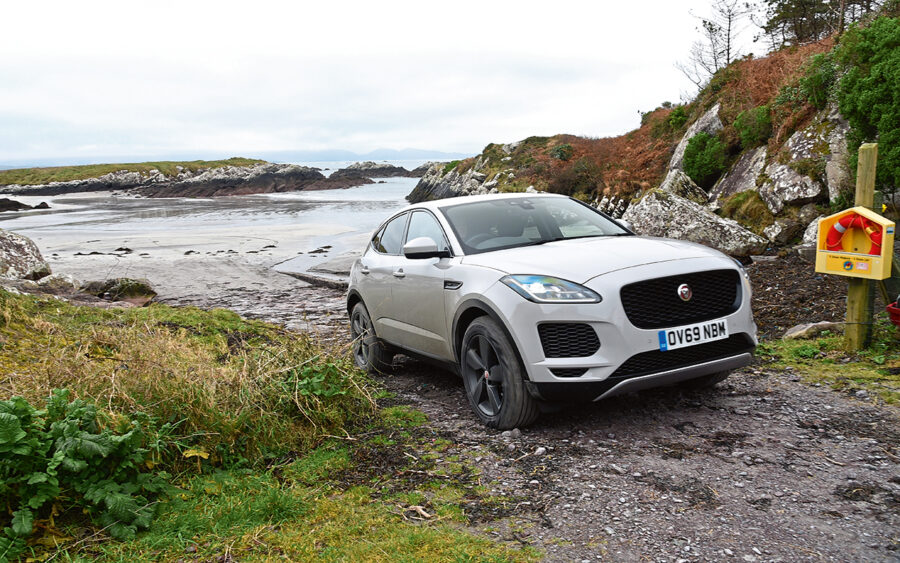
At Caherdaniel, the N70 heads north, following the coastline of Ballinskelligs Bay. This is my favourite section of the Ring of Kerry so far; not only does it offer amazing views of the North Atlantic Ocean, but, with long corners, fast straights and a table-top-smooth surface, the road is as good as any I’ve driven. I still don’t regret bringing a diesel E-Pace because, with plenty of grip, a torquey engine and nicely weighted, accurate steering, it’s almost as engaging as a sports car. And although the SUV suffers from more body roll than a cross-Channel ferry, I couldn’t have got an F-Type on – or off – the beach without some painful rock-on-metal scraping.
The other petrol-engined E-Pace models I’ve driven have been too firm for my liking – feeling more like hot hatches as they crashed and banged uncomfortably over even the smallest road imperfections – but, thankfully, the ride this diesel offers is more forgiving. The suspension irons away the majority of the bumps before they can reach the cabin, despite some of Ireland’s roads not being the smoothest.
The N70 then crosses Beenarourke Mountain and I stop to admire the view from its summit. Standing at 1,000ft, I can see all of Ballinskelligs Bay clearly. Looking west across the sea, it’s a humbling (and chilly) thought that there’s nothing between me and the east coast of America other than the grey, unwelcoming North Atlantic Ocean below me.
The viewing area here features a tall statue of the Virgin Mary. While it’s unclear if she ever visited the area, Charlie Chaplin and his family certainly did, holidaying in the next town along the coast, Waterville, throughout the Sixties. To remember the Hollywood actor’s time here, a bronze statue of him (which looks more like legendary entertainer Bruce Forsythe) has been erected on the town’s seafront.
The Ring now leaves the coast and passes through typically fertile Irish farmland. More than 200 miles from Dublin, the desolate countryside feels isolated from the rest of society, like the Brecon Beacons, the Scottish Highlands, and Swindon.
At Cahersiveen, the route begins to head east towards Killarney. Although it follows the Iveragh Peninsula’s north coast, it doesn’t feel as welcoming as the west coast, with few, if any, pretty seaside towns and less-attractive scenery. Thankfully, the E-Pace is an agreeable place to spend several hours. It is, in my eyes, better built than the XE (the result of being produced by contract manufacturer, Magna Steyr, in Austria maybe?), with better-quality plastic touch points. It uses the same large heater controls as the F-Type, making the ventilation easy to operate, but, like all Jaguars fitted with the Incontrol TouchPro infotainment system, I have to take my eyes away from the road too often to change from the sat-nav to the phone function or to switch from the radio to the music streaming page.
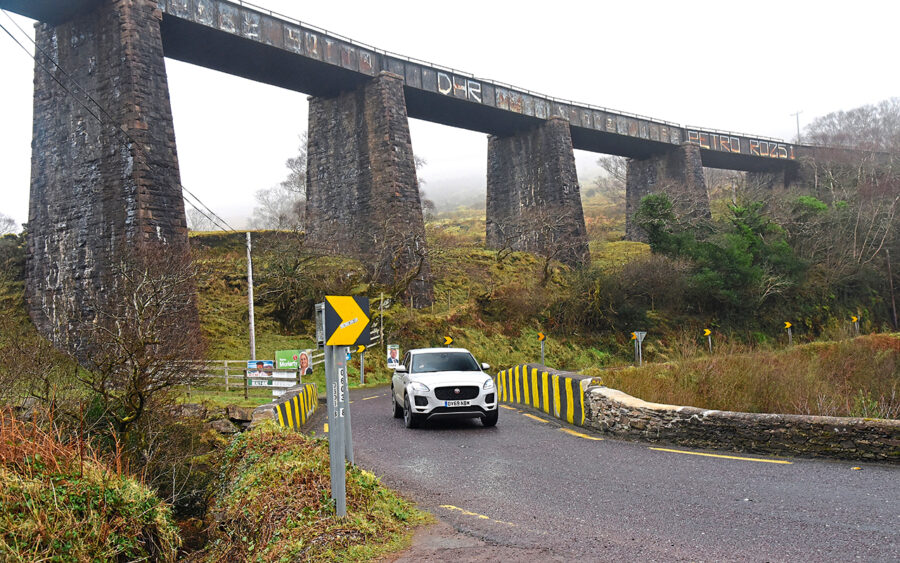
I’ve almost come full circle and finished the Ring, but it throws up one last surprise: a gigantic metal viaduct suddenly appears from nowhere at a corner halfway between Cahersiveen and Glenbeigh, rising out of the ground like the Martians from HG Wells’ War of the Worlds. The 11-span Gleensk Viaduct, with rusticated sandstone tapered pylons, was built in 1893, as was part of the Great Southern and Western Railway Line, which ran from Valentia Island Harbour to Farranfore Junction until its closure in 1960. Disused and derelict, it’s a ghostly reminder of a bygone age.
Five hours after leaving, I arrive back in Killarney. My final destination in the now-filthy E-Pace is St Mary’s Cathedral, which dominates the town’s skyline. Designed by Augustus Welby Pugin, the man behind London’s iconic clock tower on the Houses of Parliament, it is one of Ireland’s most beautiful cathedrals and offers the perfect closure to my journey.
I couldn’t have explored this beautiful route in a more suitable car, either. Yes, an F-Type would have been more glamorous, but I doubt it would have been as comfortable and I would have missed out parking on Killeen Beach, my highlight of the 110-mile loop.
The Ring of Kerry might only be a short adventure, but with its beautiful scenery, and challenging, enjoyable roads driven in the perfect choice of car – the Jaguar E-Pace – it is up there with my favourites.
